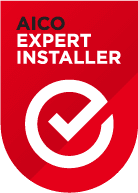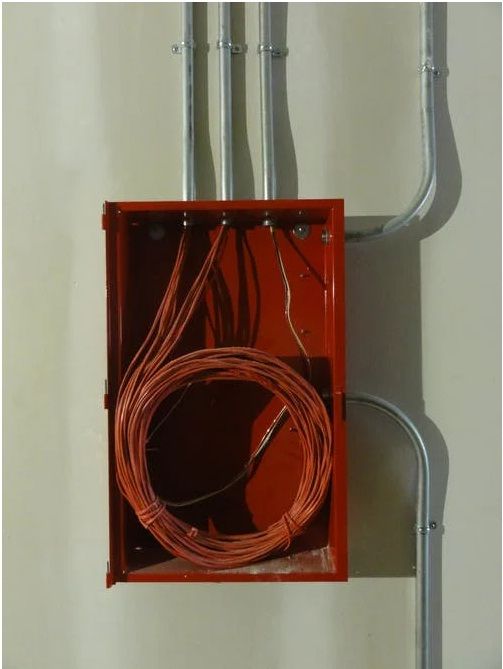Fire and Smoke Alarm
We are experts in supplying and installing interlinked fire, smoke, and carbon monoxide alarm systems for comprehensive coverage. Our advanced solutions promptly detect and alert occupants of an emergency.
Enhance Safety with
Fire and Smoke
Alarm Solutions

AICO Approved
Interlinked Fire Alarm
& Smoke Alarm Installers
Frequently Asked
Questions
Our site surveys are designed to meticulously assess your property, determining the most suitable security system tailored to your specific needs and circumstances. These surveys come with no cost or obligation on your part and are conducted by our qualified and experienced staff. Rest assured that we prioritize your safety and satisfaction, ensuring you receive the best possible security solution for your property without any pressure or commitment.
Compliance with smoke alarm requirements and recommendations is dependent on your geographical location and property type.
For optimum fire detection, we highly recommend the installation of smoke alarms in circulation spaces on every level of your home, such as hallways and landings. Additionally, it’s essential to have smoke alarms in living spaces and bedrooms. For specific areas like the kitchen, garage, and attic, we suggest Heat Alarms as an additional safety measure. To ensure maximum effectiveness, we interlink all the alarms, so if one is triggered, they all sound in unison, providing comprehensive coverage for your entire property.
To ensure your safety, it is crucial to replace your smoke alarm every 10 years. Over time, the sensors in the alarm may become less sensitive, compromising its ability to detect fires promptly.
Sign up for our smoke alarm reminder service, and you’ll receive timely notifications via text or email when your alarm is due for replacement. This way, you can stay proactive in maintaining the effectiveness of your smoke alarm and keep your property protected from potential fire hazards.
To prioritize your safety, it is essential to replace your smoke alarm every 10 years. As time passes, the sensors in the alarm may lose sensitivity, potentially hindering its ability to promptly detect fires.
By enrolling in our smoke alarm reminder service, you will receive timely text or email notifications when your alarm is due for replacement. This proactive approach ensures that you maintain an effective smoke alarm system, keeping your property safeguarded from potential fire hazards. Don’t miss out on this valuable service that helps you stay on top of your smoke alarm’s maintenance and enhances your overall safety.

When installing the alarm on a ceiling, it is essential to maintain a distance of at least 300mm from any light fittings or walls. If possible, positioning the alarm in the center of the room is ideal for optimal coverage.
If you opt for a wall installation, ensure that the alarm is 300mm away from the closest wall and placed between 150mm and 300mm below the ceiling.
Furthermore, it is crucial to position smoke alarms no more than 600mm vertically below the highest point in the room to ensure maximum effectiveness in detecting potential fire hazards. Following these guidelines guarantees the proper placement of smoke alarms, enhancing the safety and security of your premises.
For the most effective smoke alarm installation, the ideal location is in the center of the ceiling rather than on the wall.
During a fire incident, smoke tends to rise initially and then spread horizontally throughout the room. By placing the smoke alarm in the center of your ceiling, it becomes strategically positioned closest to all four corners of the room. This optimal placement guarantees that you receive the earliest possible warning in the event of a fire, maximizing the alarm’s ability to detect smoke promptly and provide timely alerts, ensuring your safety and that of your property.

- Alarms comes equipped with a base plate designed for secure installation on either the ceiling or a wall. Begin by breaking out the tabs from the base plate, and then use the fixing slots as a reference to mark the drill hole positions. Utilize an appropriately sized drill to create the holes and, if required, insert the provided plastic fixing anchors.
-
Proceed to fit the base plate to the desired location on the ceiling or wall using the screws included in the package.
-
In the case where your alarm is not a sealed battery model, carefully install the batteries following the step-by-step instructions detailed in the manual.
-
Once the batteries are in place, position the smoke alarm onto the base plate. Twist the alarm clockwise until you hear a secure click, indicating that it is locked in position. Ensure the alarm is fully twisted on to activate it effectively.
Upon installing the batteries, the smoke alarm’s battery will become active. You’ll notice a red indicator LED on the front of the alarm flashing approximately once every 45 seconds, indicating that the alarm is now operational and active.
WARNING: It’s crucial to be aware that removing the smoke alarm from its base plate will deactivate the unit, rendering it unable to detect smoke.
After securely fitting the alarm to the base plate, allow a brief 5-second period for the alarm to settle, and then proceed to test its functionality. For instructions on how to conduct the alarm test, refer to the provided alarm testing guidelines.
By adhering to these guidelines, you ensure that your smoke alarm is properly activated and in excellent working condition, providing you with enhanced safety and peace of mind.
If your smoke alarm is continuously sounding, the first step is to check if there is any smoke or fire present in your property. If no smoke or fire is detected, or if the alarm is beeping intermittently, there are three main reasons that could be causing this issue:
-
The alarm may be over 10 years old and needs replacement. Browse our selection of smoke alarms to find a suitable replacement model.
-
There could be a buildup of dust inside the alarm, causing it to malfunction. You can address this by using a vacuum cleaner or a hair dryer on a cold setting to clean the alarm.
-
The issue might be related to the power supply, or the batteries may require replacement.
For a comprehensive list of possible reasons and solutions for smoke alarm issues, contact us and we can help install a system for you
Absolutely! Our product range includes a variety of combined smoke and carbon monoxide (CO) alarms that provide comprehensive detection for both fire and the presence of CO gas.
Additionally, we offer combined heat and CO alarms that are specifically designed to detect changes in temperature within a room rather than smoke. These heat and CO alarms are particularly well-suited for areas such as kitchens and garages, where smoke or mist might be more common occurrences.
With our diverse selection of alarms, you can choose the most suitable options for your specific needs and areas within your property. Rest assured that our high-quality combined alarms will help ensure the safety and well-being of your home or business, providing you with peace of mind in the face of potential fire and carbon monoxide risks.
- Standard 9V alkaline batteries typically have a lifespan of 12-18 months before requiring replacement in your smoke alarm.
- For longer-lasting power, consider using lithium batteries which have an approximate lifespan of 5 years. Some lithium cells are also rechargeable, and when used in a mains-powered alarm, they may last for the entire functional lifespan of the alarm.
- Opt for sealed lithium batteries for the utmost convenience, as they can last the entire lifetime of the alarm, which is usually around 7-10 years.
It’s essential to note that the actual battery lifespan depends on how frequently the alarms are tested or activated, as sounding the alarm draws more power compared to when the alarms are in a passive state, waiting to detect fire. To ensure optimal performance, make sure to refer to your alarm’s manual and use only the recommended types and brands of batteries. Failure to follow these instructions may lead to alarm malfunction, potentially failing to alert you in the event of a fire, and could also void the warranty. Prioritize safety by proactively maintaining your smoke alarm’s batteries in accordance with the manufacturer’s guidelines.
Indeed, hard-wired mains powered smoke alarms can be connected to the unswitched live feed of the closest frequently used lighting circuit. This connection method ensures that the smoke alarms receive continuous power supply, making them highly reliable and responsive to potential fire hazards.
By linking the alarms to a lighting circuit, they remain active at all times, regardless of the light switch’s position. This guarantees constant monitoring and timely detection, providing an added layer of safety for your property and occupants.
Always ensure that the installation of hard-wired smoke alarms is performed by a qualified electrician to comply with safety regulations and manufacturer’s guidelines. A professional installation will ensure that your alarms are correctly wired, effectively protecting your home or business in the event of a fire.
Didn’t find the answer to your question?
Contact us for more information.
How We Can Help?
We offer expert advice tailored to your specific needs for your home or property, whether it’s an upgrade or a new alarm installation.
Our comprehensive service includes supplying, installing, and testing the new alarm system to guarantee the utmost protection for your home and compliance with the latest legislation.
Following the successful installation, we will provide a BS5839 certificate of compliance for the installed system. This certificate holds significant value, especially when you need to provide evidence of an operational system to an insurer.
Follow this link for answers to some FAQs.
Alternatively, please get in touch to arrange a free quotation.

In February 2022 it became law for all UK homes to meet the new Fire & Smoke Alarm Standards
All homes should now all have:
Smoke alarms in every circulation space on each level, such as hallways and landings.
Smoke alarms installed in the room most frequently used for general daytime living purpose.
Heat alarms installed in every kitchen.
All smoke and heat alarms should be mounted on ceilings & interlinked.
Carbon monoxide alarms to be fitted where there is a carbon-fuelled appliance (e.g. boiler, log burner, open fire or heater). The carbon monoxide alarm does not need to be connected to the fire alarms.
This applies to ALL homeowners and landlords.
If you already have alarms fitted, you need to check that they are interlinked.
Still unsure what you need or undecided on the types of alarm to install? Just contact us or fill out the quote form for a free quotation.
You can also visit the UK Government’s page on the new smoke alarm legislation for even more detail.
